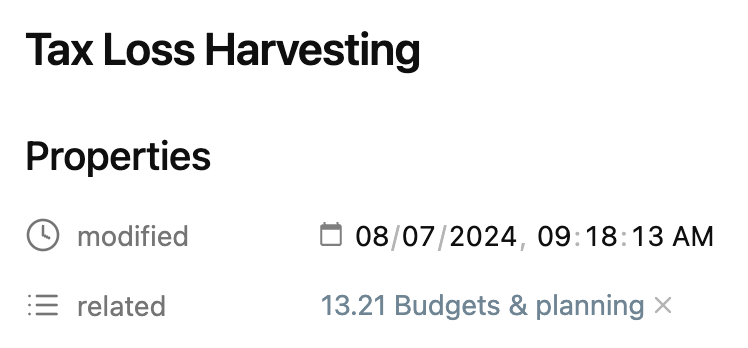To those implementing JD on Obsidian – do you keep your JDex in the same vault as your notes themselves, or do you use a separate vault?
Oh shoot, I didn’t see this before posting my topic. I didn’t mean to step on anything!
Although your question might be slightly different from mine. My original thought was to keep a separate “Johnny.Decimal” vault with all that stuff, and a “Knowledgebase” or whatever vault for everything else. It felt cleaner, somehow.
However, I keep finding myself wanting to link from things in the J.D vault to the PKM vault and vice versa, so I don’t know if this will stick. I don’t have enough experience with Obsidian to know whether using one big vault will feel too messy or confusing, so I’m curious how others handle it, too.
No problem. For the moment, I treat my JDex files as pure “card files” (the library analogy). I will use links between cards as cross-references. Most of my support materials are in my file system(s) (OS, and primarily OneDrive and DropBox) or in Devonthink. But I am thinking of use cases for notetaking, and I guess keeping everything in the same vault as the JDex folder makes sense.
I’m keeping my index in the same vault. I’ve written a few small command-line tools to help keep my file system folders in sync with the index and it is working well for me.
I struggled for a week or two on the right method (for me) to keep my notes tied to the index. I knew that I didn’t want to use a folder structure for the leaf node indexes - I like how the Life Admin pack (which I purchased) has the IDs as proper notes. I’m using a few properties to indicate where stuff related to that index is stored (usually file system, 1Password). It is self evident within the ID note what is related from Obsidian itself because I’m using the related property. For example:
Within the ID note itself, I include (at the bottom) a DataView query:
```dataview
table without id file.inlinks as "Related notes"
where file.name = this.file.name
My notes are mostly dumped into a single sub-folder (Cards), but some that are sequential time-based might live in some structure under a different top-level folder (Calendar).
This is working great for me so far, and has the benefit of allowing for multiple related IDs (which I use rarely).
I’ve kept the default tags in the ID notes that JD includes with the Life Admin pack, but I don’t think I’ll be using them.
Hi! I’ll add my two cents re: JDex and notes in the same vault. I recently switched to Obsidian from Joplin as my notes app.
My index and my work notes exist in the same vault. Sometimes the IDs are the notes, and sometimes the IDs describe documents. For example, Category 16 is Pedagogy notes, where I take note of what I learn through professional development and the reading of journal articles. Example IDs might include broad subjects like “Vocabulary,” “Syllabus design,” or “Reading and writing.” These notes might get long, but I keep it manageable with the outline view open on the side.
Meanwhile, Category 21 is Syllabi. Each ID is a syllabus for a class I’m teaching. Each ID is a syllabus for a class I’m teaching. The syllabus documents also get long because they list the general structure of each unit of the course. So, I have a variety of things in this system, some related to knowledge management, and some related to documents and administrative things.
Just as @jack.baty mentioned, the advantage of having knowledge management notes in the same place as the index is that you can link between them easily. For example, I find it helpful to link to my research and PD notes as I write a syllabus. So far, keeping the notes and the index in the same place hasn’t felt messy, but my total number of IDs is only 53, so time will tell if that changes.
The downside is that there can sometimes be some friction in the decision to create a new note. I think, Is it worth making a new ID? If they were separate, I could just go pure wiki-mode and link to my heart’s content. However, the friction is worth it—it encourages reflection and discipline in knowledge management.
If I was still using Joplin, this problem wouldn’t exist. I switched because I maintain two systems, and IDs from both systems would show up in search results in Joplin. If I wanted them both to show up, I would have put them in the same system. Likewise, if I want to link between notes, they should be in the same system.
